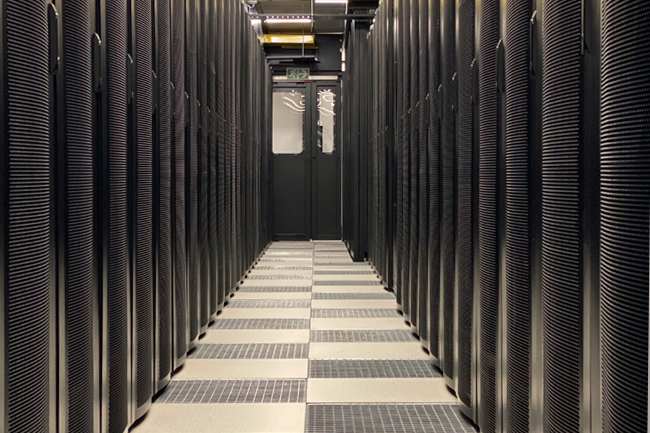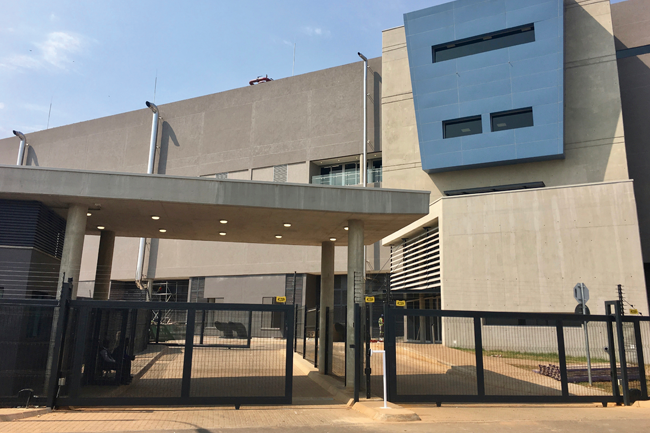Next-generation data centres are rapidly gaining momentum as more banks and large enterprises embark on a digital migration strategy. Riding on a wave of cloud adoption, data-centre outsourcing is growing in popularity, as enterprises migrate away from the on-premise data centre. According to Gartner, 80% of enterprises will make this move by 2025 – while the Industrial Development Corporation (IDC) believes the demands of next-generation applications and new IT architectures will force 55% of enterprises to upgrade their existing facilities.
Teraco CEO Jan Hnizdo says that colocation is an essential tool for any enterprise addressing legacy systems or considering cloud migration. ‘It’s becoming more common for the traditional on-premise data centre to cease to exist as more businesses embrace cloud adoption. A digital migration strategy is hard to achieve by remaining on-premise with ageing equipment and legacy systems.’

He adds that traditional on-premise data centres were built to entirely different specifications from today’s requirements and, as a result, are underpowered and lack sufficient cooling. They are also not resilient enough to withstand issues such as load shedding.
‘Enterprises today need to be online, in real-time, constantly. There are significant costs associated with downtime, which no business can afford, from both reputation as well as profit perspectives.’
However, building an on-premise data centre can be difficult to justify. Aside from the immense cost implications, they lack the versatility of a colocation data centre, which is becoming the preferred solution. Hnizdo says that the next-generation data centre isn’t just about a physical location for IT infrastructure, but also about being interconnected at the edge. ‘Once inside a highly connected colocation facility like Teraco, we take you closer to the core and key services and trading partners,’ says Hnizdo.
‘We essentially plug you into the infrastructure that forms the backbone of the internet. Whether it is integrating, storing, communicating or transporting intelligent data, Teraco forms an integral part of an enterprise’s digital infrastructure and strategy.’
By colocating, the enterprise has access to a multitude of digital services. ‘Colocation today includes enhanced services such as carrier neutrality, cloud-enabled services, access to multiple cloud services, and interconnects to other sites or services,’ according to Hnizdo. ‘This is critical to an enterprise that is driving digital transformation, because by being in a vendor-neutral data centre, you’re automatically connected to a network-rich environment’.
Interconnections within the data centre provide a reliable and secure way to connect as well as being more cost-effective. The Teraco ecosystem is expansive and connects customers, partners and employees directly. Collaboration is simply a connection away and it enables enterprises to offer more robust and innovative digital services to clients.
‘Being able to connect via digital channels provides immense value to the enterprise. Being able to act in real-time at the core, adapt quickly and leverage the ecosystem creates new business value and growth,’ says Hnizdo.
Locally, cloud growth has become prevalent with the arrival of big public cloud infrastructure players such as Microsoft Azure and Amazon Web Services. Easy, cost-effective and resilient connectivity to these cloud providers is imperative for any enterprise.
‘These cloud providers provision their services from on-ramps typically located in vendor-neutral data centres, and offer high levels of performance, reliability and scalability at a more attractive price point compared to providing it to in-house data-centre facilities,’ says Hnizdo. He adds that as a result of cloud, the bar for speed and agility has been set high. ‘The enterprise and its IT department are expected to transform into a service-type of business, which is often difficult to do in a traditional data centre.’

Part of the cloud migration push is the move to ‘software-defined everything’. While not a new concept, it’s one that takes the emphasis off infrastructure and looks to intelligent software to run business processes.
For specific enterprises, going with a multi-cloud strategy is a significant consideration. Enterprises can deploy across multiple clouds; using the services that are best suited to meet the needs at hand. Being colocated in the same facilities as the cloud on-ramps is critical for the enterprise. Colocation at the appropriate vendor-neutral data-centre facility helps de-risk the move to digital transformation.
The arrival of the world’s biggest cloud providers, Microsoft and Amazon, is a clear indication of the growing need by enterprises for cloud services in Africa. The growth of South Africa’s digital economy is set to be bolstered, as both these players establish a direct presence in the country, in what is expected to become a billion-dollar market according to the IDC.
‘The world connects here’ is what Teraco predicted when launching in 2008 and, 11 years later, the world does indeed connect at Africa’s most interconnected data-centre facilities.
Build it, and they will come
After investing an estimated ZAR2 billion in its latest expansion, Teraco says that with the addition of JB3 to its Isando (Gauteng) campus, the massive data-centre complex will offer 80 MW of total power and 20 000 m2 of white space for hosting their customers’ network infrastructure and servers.
Phase I of the JB3 facility is expected to be complete in mid-2020, followed by the second phase in December 2020.


